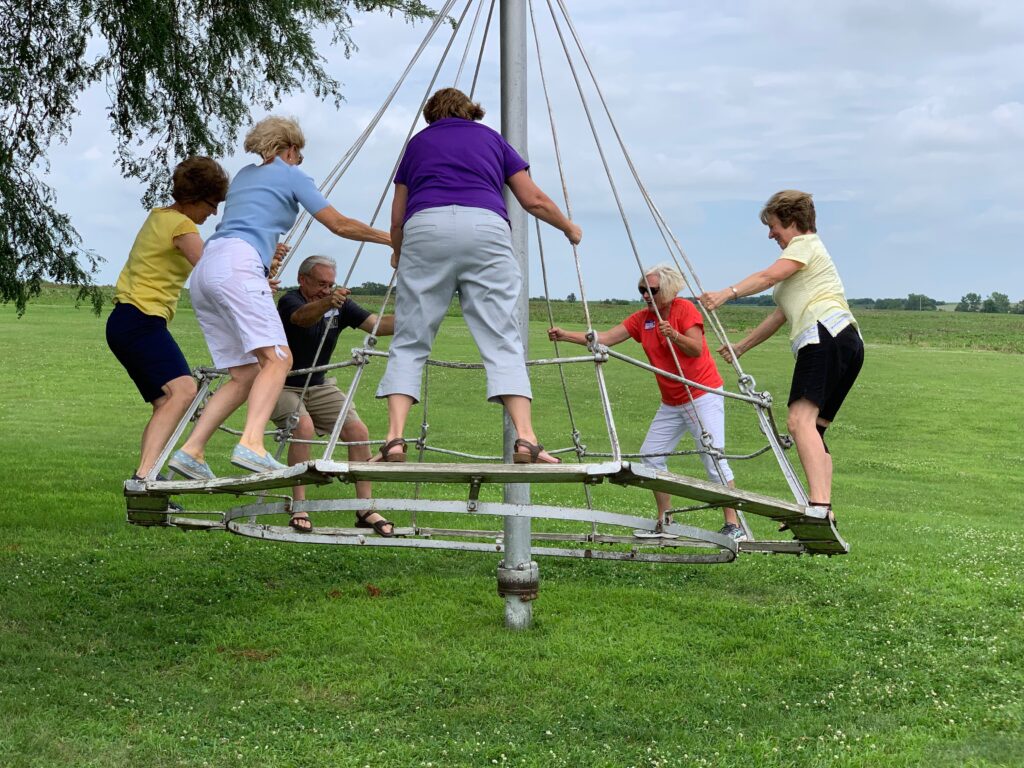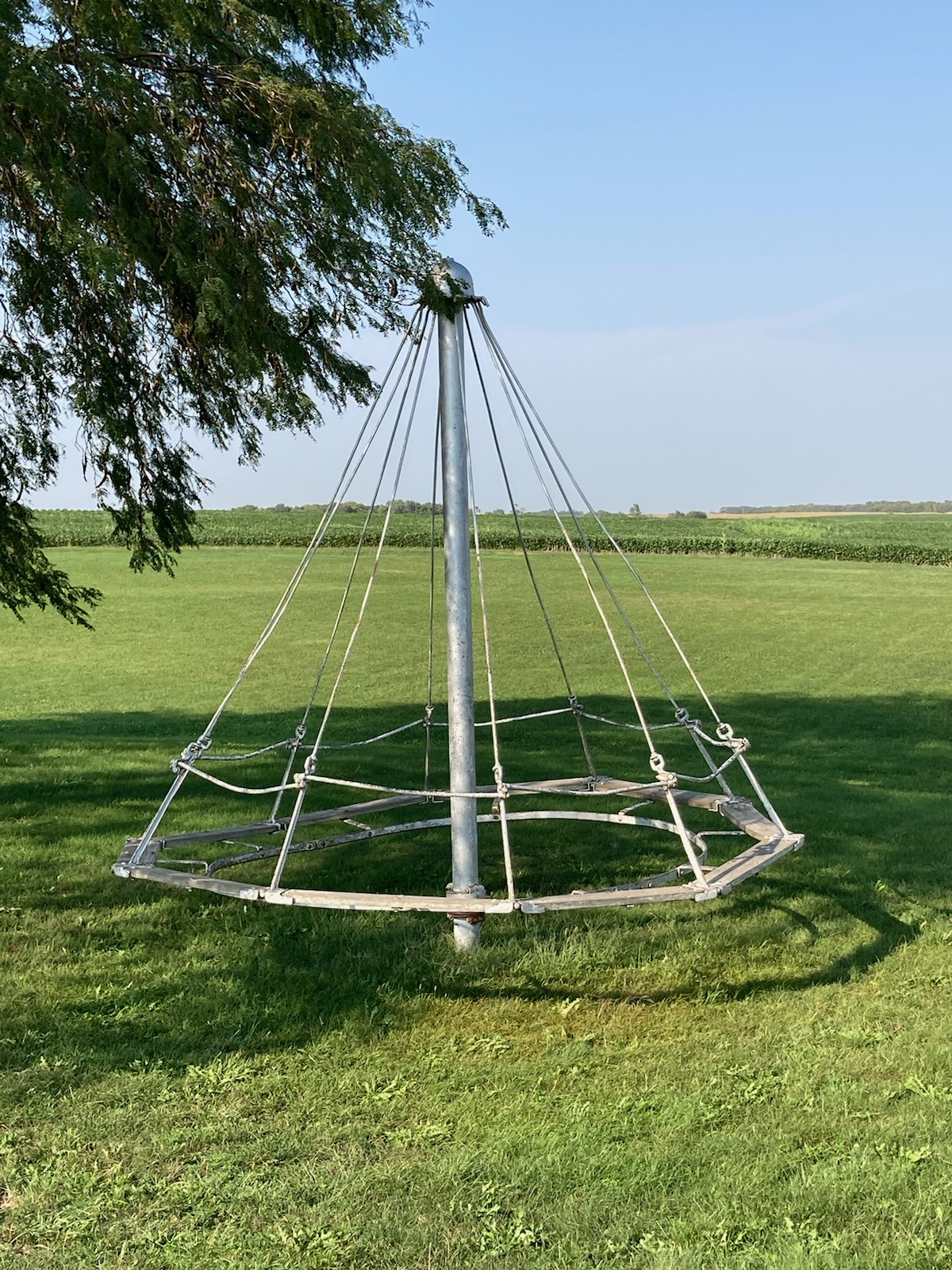Crossing the state line to see my grandparents meant crossing into a new world. It required a mental shift, shelving the knowledge I’d accumulated from a childhood living in South Omaha.
The trip took us south, out of the city, where gently rolling plains, covered in the cliche golden grain, replaced steep streets, cracked sidewalks and graffiti.
When I stepped out of the van, and my feet hit the gravel, bullfrog croaks replaced cat calls (which I learned to ignore by the age of 10). In Omaha, I kept my eyes and ears open, and knew which buildings and houses I could go to if any trouble started and got too big to handle; in the country, I made sure to keep my eyes and nose open, to avoid the cow pies decorating the pastures of my grandparents’ farm.
And I knew, when I crossed the Nebraska-Kansas state line, I’d need to pocket my Husker pride. Rather than the red and white bomber jackets celebrating the Nebraska Huskers, I’d see coats of a different shade – purple and white for the Kansas State Wildcats.
I didn’t have a bomber jacket, and I was a bit relieved I wouldn’t immediately meet with an altercation when I ran across some other kids sporting different colors.
Even sans bomber jacket (even in my homemade dress, second hand clothes and shoes), the kids I’d see at church always seemed to know I wasn’t just coming from a neighboring county, but a city. Maybe it was in my walk, the set of my shoulders – unconsciously crafted for situations where you wanted to make sure it was clear: you weren’t one to mess with.
No matter how many times I’d visit the farm, walk the pastures, traverse cow lots or jump from bale to bale, some element of the city stuck, and I’d often feel a bit of an “outsider” when I met up with other kids – mostly at church and in Sunday School. I was met with politeness rather than brash bravada, but the message was clear: they were sizing me up. I had to re-assess my rules of engagement most anywhere I encountered country kids.
But not at the playground.
My grandparent’s church had a school across the lane, long closed, but still accompanied by a playground, still often used. Its structures are simple: two bars, one 3 ft off the ground, one 5ft; 3 swings with wooden seats; two teeter totters, also wooden; and the showpiece – a merry-go-round 15 feet high and 20 ft across.
The shape of the whole structure looked like an inverted shuttlecock, a half-opened umbrella, a witches hat – the base with the benches solid and sturdy; the top an inverted iron bowl resting on the top of the pole, attached to the benches by angled rods.
(similar, though not the same)
After church, while the adults chatted for what was certainly an eternity (my mom excited to visit with relatives during our occasional visits to the farm), we kids would run to the playground. As we took off, the gravel on the road and parking lot crunched underneath our hard-soled Sunday shoes.
A the merry-go-round, wo or three sturdy kids remained on the ground while the rest of us clambered up to claim a seat on the benches. We clung to the bars, as the kids on the ground slowly started running, and set the structure spinning. When they were pleased with the speed, they jumped on.
We all would stay seated for just a moment. Then several kids stood up, steadying themselves on the bars and swaying forward and back, their upper bodies mimicking that movement which keeps a swing in motion. The rest of us took our feet off the footrest – a metal bar a few feet inside of the benches.
Around and around, back and forth, we swung and swayed until –
Crack!
The metal footrest smashed into the center pole.
Crack.
We cheered and squealed.
Crack-Spark!
Metal striking metal (perhaps lead paint striking lead paint) let off the briefest spark, like the passing of static electricity in the dark.
The merry go round would eventually slow and the little kids would get off, their turn complete. If they stayed, they knew their fate was sealed.
“If you get scared, we’re not going to stop,” an older kid would warn.
Of course, they would stop, if a kid went from whimpering to outright crying. With groans and eye rolls, the ride would be slowed to a gentle stop, the frightened child helped off. But the kid who let their emotions get the best of them would forever wear the shameful moniker of “crybaby” – and they wouldn’t be allowed to ride past the slow speed for quite some time.
No crybabies allowed – not on the merry-go-round, not in any other area of country life.

Picture of my mom and her cousins at a recent family reunion.
A similar “roundabout” in England. At the time of this writing, I’d forgotten how kids liked to stand on the handrails.



